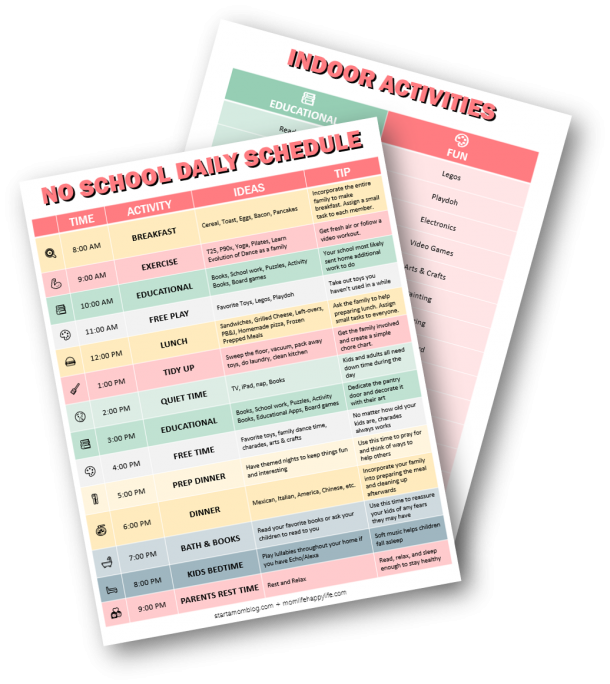Using the 3 learning styles to your advantage to teach your kids about money

You’re sitting there at the table, paying bills while your husband makes dinner and your preschooler plays with some play-doh. You’re shuffling papers, trying to figure out why your bank account isn’t adding up as it should. You should have an extra $150 from changing your car insurance provider! Where is it? Ugh!
You’re little one busts out, “Shizz!” as they drop their latest creation. Your eyes go big, and your husband does the slow turnaround and squints his eyes. “What did you say?” You ask your kiddo. Your husband laughs and tells you that you’ve been saying it for the last 15 minutes!
Shizz is right! How do I fix this?!
Why is it essential to create a healthy habit between our kids and money now?
I think we all can agree that starting a brand new habit is easier than changing a bad habit into a positive one. It’s the old saying, “begin as you mean to go on.” I mean, wouldn’t it be so much easier for you not to like chocolate to begin with vs. trying to resist now? HAHA… okay, that’s a bit drastic as chocolate can be a girl’s best friend!
Let’s put it another way; a person only has a few relationships that they will carry for their entire lives. A relationship with…
- themselves
- food
- money
All other people and things fade in and out of our lives. Only these three things remain for the entirety. What makes them so significant is that we deal with all three of these things every day, multiple times a day. So wouldn’t it be great if we could create a healthy relationship from the get-go?
With money specifically, it’s hard. We, as adults, probably picked up it from our parents, without even realizing it. And since financial education isn’t that prevalent those assumptions and attitudes probably haven’t been challenged or changed.
Kids learn in a variety of ways- the three learning styles
As Mamas, we know that little eyes & ears are everywhere! (if your little one isn’t old enough yet then consider this fair warning). Just the other day, my 4 yr old told my husband that shes wants a “refreshing frozen coconut beverage” WHAT? I mean, maybe she got that from me… maybe.
There are three main pathways of learning, and when kids learn the same principal through multiple channels, they are more likely to retain that information and use it correctly later on. The three pathways are…
- auditory
- visual
- kinesthetic
We’ll dive into how we can use these pathways to our advantage in teaching our kids about money!

Talk about money in front of your kids – Auditory Learning
Back in the day, it wasn’t considered polite conversation to talk about money, and keeping money talk in the shadows hindered our knowledge base, and our openness to learn.
When you bring something out into the open, you demystify it, and take away the confusion and make it okay for people to admit that they didn’t know about an aspect of it. Malcome X said… “Education is the passport to the future, for tomorrow belongs to those who prepare for it today.”
The overall lesson is to talk about money, have it not only be acceptable but encouraged!
Kids learn by watching us, and listening to us, every hour of the day. Yes, we should talk with them and have engaging conversations, yet it’s by watching & listening to us engage with others in a way that they learn too.
That means that if we argue with our spouse about how they spend money, and rage at not being able to pay the bills, then this is what they will pick up on. Your habits become their perception and then their reality.
So yes, talk about money in front of them, but be sure to do it in a healthy and positive way. This can be as simple as talking about the cost of replacing your ricketty back deck or talking about your tax return, or better yet, talk about the raise that you got for all your hard work (congrats!). Talk about your monthly bills being due and why we pay others for things like electricity, water, etc. These conversations can be casual & quick, but make sure they are always positive.
If your money situation isn’t something you feel you can be positive about (because you either have debt, don’t make a lot, etc.). Don’t let that keep you from talking about money. You can talk about how hard you’re saving money for a new car, and that it will be a while until you can afford it, but you have a plan and are making progress! The takeaway is that you are in control of the situation. You have a plan!
Show your kids how you are saving money – Visual Learning
Kids are very visual learners, and seeing something might be more easily grasped than you simply talking about it. For example, let’s say you’re saving up to buy a pool/bike/whatever. You can print a picture of it and mark it up as you save for it. This lets them see progress, it encourages having patience, working hard for what you want, and consistency & dedication to a goal. Better yet, let them mark the progress, and color it in if it’s a coloring page.
Another way to harness visual learning is to go into the store with a bunch of $1 bills. You show them how much money you have going into the store, and you can talk about how much each item costs as you’re adding it into the cart, switching the money from one envelope to the other. If they want Captain Crunchies Cereal, then are they willing to give up getting their Gummie Snacks? Money isn’t infinite, it’s a trade.
Have them learn by doing – Kinesthetic Learning
Learn by saving money
Another popular learning method for kids (that is widely used in schools) is kinesthetic learning. This refers to touching, doing, experiencing, or being physically active, and as mentioned above, it’s one of the three main pathways to the brain.
The classic mason jar example of having money buckets is great for this! Have one jar (make sure they’re clear) be for Spending, one for Saving, and one for Sharing. Then have the kids be the ones to put the coins in each of the jars.

In the beginning, and if they’re young, they don’t need to divide the funds equally by value. Just the act of diving the money is enough. Later on, as they learn about money, you can layer in the next level.
Let them have total control over the Spending jar. This is a way that they will learn about responsibility. Sometimes we learn best by making rash decisions or mistakes. Or better yet, they surprise us and do amazing things with it!
Then for the Savings jar, they can save for a big toy that they want, or whatever experience they want. If the toy they want is really expensive, and it might take them forever to save for it, consider putting in a matching amount, so that they can still learn the lessons of saving, but not have it drag out so long that they lose steam. So if they put in $75, then you put in $75 to buy that $150 item.
As a shared above (and as you of course know) kids are crafty! They pick up on subtle things. Your child may have a hard time grasping the concept of “saving” up to buy something because they see you using credit cards. If this is the case, you’ll absolutely want to get some tips on talking to your kids about credit cards. This will help prepare you for any challenging questions that may come up!
A fun way to get kids into saving is doing a money-saving challenge together as a family! Especially if you’re saving for a family vacation, this can get your kids in on the action too! There are even some printables for the challenges (a fruit & veggie challenge too for our littlest participants)!
For the last jar, you can have discussions about what Sharing means. Share with your church, your local animal shelter, buy a toy for a friend, etc. Focus on “helping” others and the happiness that comes from doing a good deed. You can layer in the aspect of gratitude. Being grateful that you have XYZ and are in a position to help others.
Learn by earning money
I am a firm believer in chores as part of being the duty of members of the household. That means that everyone shares in the work to make the house run smoothly.

Then, if they want, you can layer on additional chores that they can do to earn money.
This is all dependant upon the age of your kids and what you feel they are capable of. I always encourage parents to try and give their kids a little more responsibility and see how they do with it; you might be surprised at what your little one can do!
Things like…
- taking care of the family pet
- emptying trash cans in the house
- sorting laundry
- putting laundry away
- putting away groceries from the store
- set the table
- make snacks/lunches
- clean out the fridge
- wash dishes
- get the mail
- raking leaves
- watering house plants
- putting the trash & recycling out for pickup
- emptying the dishwasher
- cleaning up the toys into the bins
If you have a teenager and have never before encouraged chores or earning money, maybe ease into it by starting with a hobby that could turn into something they could make money from. Starting one together could be a great bonding experience for you both! Then as time goes on, they could begin to take the lead with the hobby. Check out 129 hobbies for Bored Moms + Money Making Ideas, to see if any of these hobbies interest you. Baking & cake decorating could be just the thing for your mother & daughter Sunday afternoon!
For jobs, especially if you have young kids try and focus on progress and not perfection. Praise their efforts and hard work, let them know that you are proud of them! You want to try and keep housework as positive of an experience as it can be! By all means, it can be hard for them, but rewarding too!
Another helpful tip is to have the kids watch you do it a few times, and then have them do it along with you, and then let them tackle it on their own. Your idea of “clean the room” probably looks vastly different than theirs. So show them! Then next time, tell them precisely what to do…
- put away the toys in the family room into the toy bin
- put all of the dirty dishes in the sink
- empty the trash in the office and bathrooms and put the bag in the garbage can in the garage.
- make your bed with the clean blue sheets from the hall closet, put the dirty sheets in the laundry basket
- gather up all the clothes on the floor and put them in the laundry basket
You are their teacher, guide, and coach
Yes, talking to your kids about money can be hard, it can be uncomfortable, and it can be intimidating, and even depressing. Yet, wouldn’t it be great if we NEVER felt this way about money? It’s not too late for us to instill these positive feelings and habits into our children.
Wouldn’t it be amazing if our children grew up paying their monthly bills and not get knots in their gut, wondering if they had enough? Wouldn’t it be amazing if they didn’t have to worry about overdraft fees because they set up their finances in a way to cover everything automatically?
We can do this for them; we just need to harness the energy of their little eyes & ears in a way that will benefit them in the long run. You know, like letting your husband think that saving for the lounge chairs (complete with wine glass holder) was his idea all along!
How are you going to teach your kids about money?





Very wise, i used to throw the old bottles back to the grocery and whatever i get is mine during my young days.
I recycled cans too! Such a rite of passage it seems!
You are so right that if we start those money conversations early then our kids won’t have to grow up making bad decisions that have them worried and stressed over bills. Great ideas!
Yes! Start early! Get them used to it being not only normal but encouraged!
What a great post. I learned so much! Can’t wait to use these tips with my little one. Thank you 🙂
So glad you liked it! Thanks for stopping by!
This is a great read and so important to make sure our kids understand how money works. We try to teach our kids too and these are great tips!
Thanks for visiting Yana! So glad you liked the post, I hope you can try an idea out with your young ones!
This is such a great article I don’t have children yet BUT I would use the kinesthetic method. I like it a lot with actually being able to hold the money and save that way. I also like the visual one cause that’s the way I personally learn. I have to see things. Great post I’m saving !
So glad you liked it! I’m such a visual learner too! I love charts & graphs, and seeing a process in action!
YES! This article is so right on the nose. We do paid and unpaid chores, with the option of doing extra paid chores. Last week, my oldest earned $50! And my house was super clean 🙂